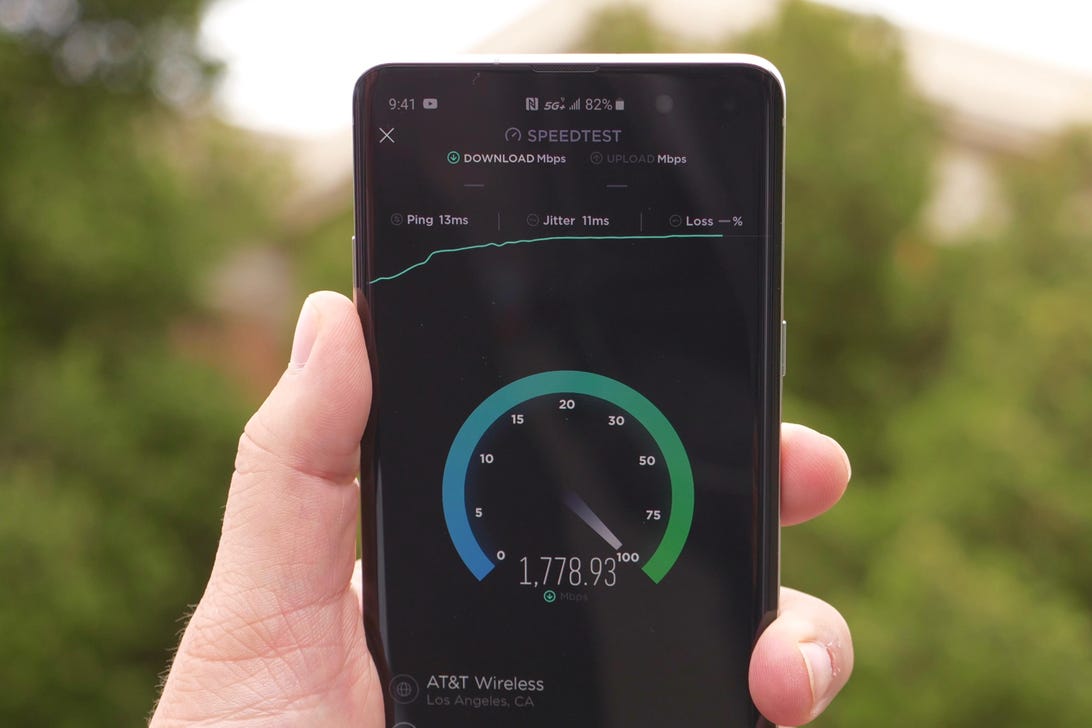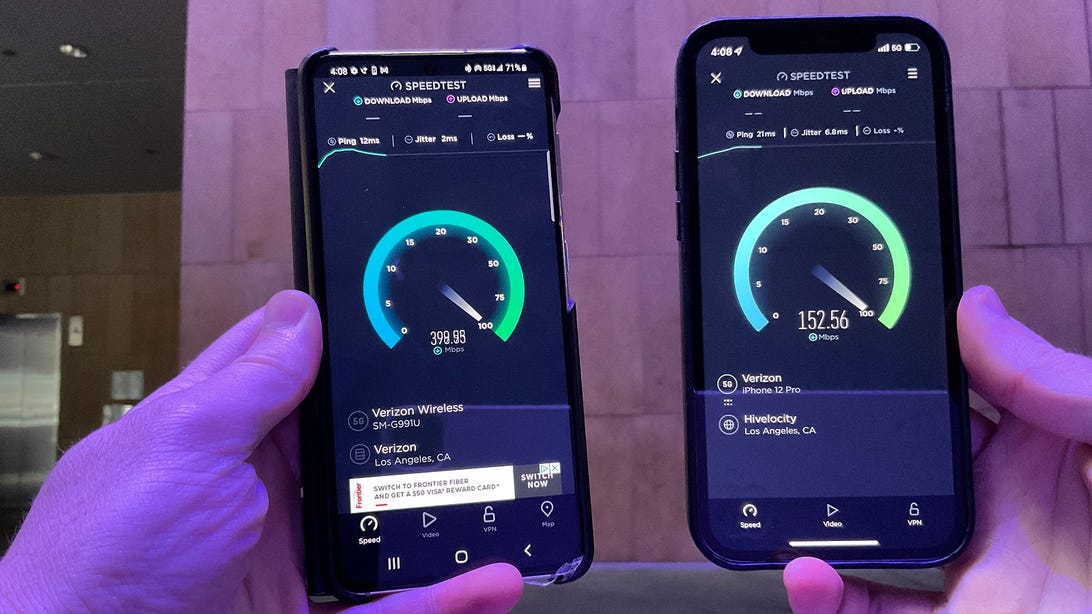
It may have taken some time, but 5G is slowly starting to build momentum in the US. All major carriers now have nationwide 5G deployments covering at least 200 million people, with T-Mobile in the lead covering over 310 million people with its low-band network. AT&T’s low-band version now covers over 255 million people while Verizon has a low-band network that covers around 230 million. All of the top phones of the past year come with 5G, including the iPhone 12, iPhone 13 and Samsung Galaxy S21.
Next-generation networks from all the major carriers are set to continue to expand throughout 2022, laying the foundation for advancements such as replacing home broadband, remote surgery and self-driving cars that are expected to dominate the next decade.
Read more: CNET explains everything going on with AT&T and Verizon’s 5G C-band upgrade
But with all that activity by competing carriers, there are myriad different names for 5G — some of which aren’t actually 5G.
Differing technologies and approaches for presenting 5G, however, have made this upcoming revolution more confusing than it should be. Here’s a guide to help make sense of it all.
Know the three flavors
When it comes to 5G networks, there are three different versions that you should know about. While all are accepted as 5G — and Verizon, AT&T and T-Mobile have pledged to use multiple flavors going forward for more robust networks — each will give you different experiences.

Millimeter-wave: High speed, but with a downside
The first flavor is known as millimeter-wave (aka mmWave). This technology has been deployed over the course of the last few years by Verizon, AT&T and T-Mobile, though it’s most notable for being the 5G network Verizon has previously touted across the country.
Using a much higher frequency than prior cellular networks, millimeter-wave allows for a blazing-fast connection that in some cases reaches well over 1 gigabit per second. The downside? That higher frequency struggles when covering distances and penetrating buildings, glass or even leaves.
In effect, outside of some 5G-equipped stadiums, airports and arenas, these coverage areas may be no bigger than an intersection. One solution is to string more cellular radios, but in many places, that isn’t an option. For now, think of it as a souped-up Wi-Fi hotspot.
Low-band 5G is the foundation for all three providers’ nationwide 5G offerings. While at times a bit faster than 4G LTE, these networks don’t offer the same absurd speeds that higher-frequency technologies like millimeter-wave can provide. But they do function similarly to 4G networks in terms of coverage, allowing them to blanket large areas with service. They should also work fine indoors.
T-Mobile currently blankets over 310 million people with its low-band 5G network, while Verizon reaches over 230 million and AT&T covers over 255 million people, with their respective low-band 5G networks.
Midband: The middle ground of speed and coverage
In between the two is midband, the middle area of 5G. This spectrum is faster than the low band, but with more coverage than millimeter-wave. The technology behind Sprint’s early 5G rollout, it was one of the key reasons T-Mobile worked so hard in recent years to buy the struggling carrier and a key to why T-Mobile has opened up such a big, early lead in 5G performance.
The carrier now covers over 210 million people with its midband 5G signal and has said that it expects average download speeds over the midband network to be around 400 megabits per second, with peak speeds of 1Gbps.
While T-Mobile, AT&T and Verizon have plenty of low-band spectrum, midband has previously been used by the military, making it a scarce resource despite its cellular benefits.
But that has changed. A Federal Communications Commission auction in 2021 made a lot more midband spectrum (known as C-band) available for wireless carriers and all three major operators spent billions acquiring airwaves. Verizon and AT&T were the biggest spenders in the C-band auction, with these networks finally starting to go live on Jan. 19, after some delays due to objections from the Federal Aviation Authority and the aviation industry.
It’s important to note that no one band or flavor of spectrum is inherently better or worse than another. All three carriers have talked about incorporating all three types of spectrum for a more comprehensive network.
As you’d expect in an industry that is used to dominating the airwaves with commercials, there are several different ways carriers are referring to the different flavors of 5G.
AT&T is the worst offender, with three flavors: 5GE, 5G and 5G Plus.
5GE, short for 5G Evolution, isn’t actually 5G. So no, your iPhone 11 ($499 at Apple), Galaxy S10 or Pixel 4 that shows 5GE isn’t compatible with the new next-generation networks.
The National Advertising Review Board previously called for AT&T to stop advertising that it offers “5GE.” AT&T still, however, continues to use the icon on its devices.

The regular “5G,” meanwhile, is real 5G but only on the low-band flavors. AT&T uses “5G Plus” for its millimeter-wave and C-band 5G networks.
Verizon calls its millimeter-wave and C-band 5G networks “5G Ultra Wideband,” “5G UW” or “5G UWB” (the exact icon will vary based on your device). While it’s not as complicated as AT&T’s approach, it could run into some confusion thanks to Apple’s embrace of the similarly named Ultra Wideband technology in recent iPhones. Unlike Verizon’s UWB, Apple’s version isn’t related to cellular, but is rather a technology used to find other similarly equipped devices. Apple’s version of UWB is what powers its AirTags tracking system.
In addition to the 5G UWB name, Verizon calls its low-band offering “Nationwide 5G,” with devices showing a regular 5G indicator when connected to this network.
T-Mobile previously kept things simple with one name: 5G. That has since changed and it now has two names for the new wireless technology: Ultra Capacity 5G is the name for its faster midband and millimeter-wave networks while Extended Range 5G is the name for its low-band network.
With iOS 15 and the latest Android releases, the carrier has finally decided to follow its rivals and will now show two different icons depending on your connection. A 5G icon will appear when you’re connected to its low-band network, while a 5G UC indicator will appear when you’re on a 5G phone connected to the midband or millimeter-wave 5G networks. You’ll see a regular 5G icon when on the low-band network.


